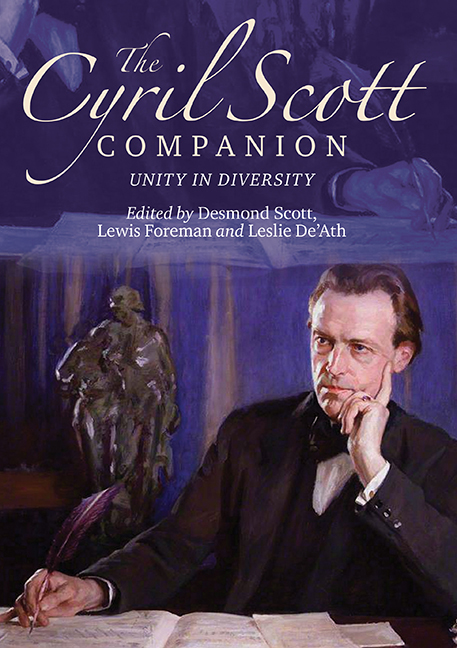Book contents
- Frontmatter
- Dedication
- Contents
- List of Illustrations
- List of Tables
- List of Contributors
- Foreword
- Preface
- Acknowledgements
- Editors' Note
- I SCOTT IN CONTEXT
- II THE MUSIC
- III THE WRITINGS
- 17 The Poetry
- 18 The Occult Writings
- 19 The Purpose of The Boy Who Saw True
- 20 Near the End of Life: Candid Confessions and Reflections: A Discussion of the Memoir
- 21 The Therapeutic Books
- 22 Childishness or The Moron Mind
- 23 A Note on the Plays
- IV PERSONAL REMINISCENCES
- APPENDICES
- CATALOGUES, DISCOGRAPHY AND BIBLIOGRAPHY
- Index of Works
- General Index
19 - The Purpose of The Boy Who Saw True
from III - THE WRITINGS
Published online by Cambridge University Press: 14 September 2019
- Frontmatter
- Dedication
- Contents
- List of Illustrations
- List of Tables
- List of Contributors
- Foreword
- Preface
- Acknowledgements
- Editors' Note
- I SCOTT IN CONTEXT
- II THE MUSIC
- III THE WRITINGS
- 17 The Poetry
- 18 The Occult Writings
- 19 The Purpose of The Boy Who Saw True
- 20 Near the End of Life: Candid Confessions and Reflections: A Discussion of the Memoir
- 21 The Therapeutic Books
- 22 Childishness or The Moron Mind
- 23 A Note on the Plays
- IV PERSONAL REMINISCENCES
- APPENDICES
- CATALOGUES, DISCOGRAPHY AND BIBLIOGRAPHY
- Index of Works
- General Index
Summary
CYRIL Scott wrote a number of books on the occult, beginning in 1920, and by 1950 had become fairly well known as a writer on the subject. He was therefore not surprised one day to receive an unusual document on an occult topic that aroused his curiosity and interest.
Unlike other unsolicited manuscripts, this one was not asking him to suggest a publisher, nor was the author in any way seeking publicity, wishing instead to remain anonymous. The manuscript had been sent to him, he maintained, by the author's widow, with a note explaining that the author asked only that it be given to someone with a known interest in the occult. Scott decided it should be published, wrote an Introduction, Notes and Afterword, and sent it to Neville Spearman, who produced the first edition in 1953. What intrigued him, he explained, was that the manuscript was in the form of a diary – a diary written by a boy who, judging from the vocabulary, was about eleven or twelve years old and who initially had no idea his ability to hear and see spirits was anything out of the ordinary.
The date of the diary is 1885, making Scott and the Boy very close in age. Scott was born in 1879, and even the most cursory examination reveals many other parallels. Both came from conventional, middle-class, church-going families from the north of England; both were extremely sensitive to music and prone to weeping at sad hymns in church. Both had sisters three or four years older (Mildred in the Boy's case, Mabel in Scott's), who liked to tease and torment them. More significantly, there is a spirit that frequently visits the Boy, whom he originally thinks is Jesus. This highly evolved individual later suggests the Boy call him E. B. or Elder Brother – the same name Scott used for such souls in his An Outline of Modern Occultism. Obviously, the author of The Boy Who Saw True is Cyril Scott himself.
Scott's An Outline of Modern Occultism was published in 1935. Since then, World War 2 had intervened and attitudes had radically changed. Maybe Scott felt that it was time for another book on the subject, and, instead of revising the old one, decided he would try an entirely new approach.
- Type
- Chapter
- Information
- The Cyril Scott CompanionUnity in Diversity, pp. 341 - 346Publisher: Boydell & BrewerPrint publication year: 2018



